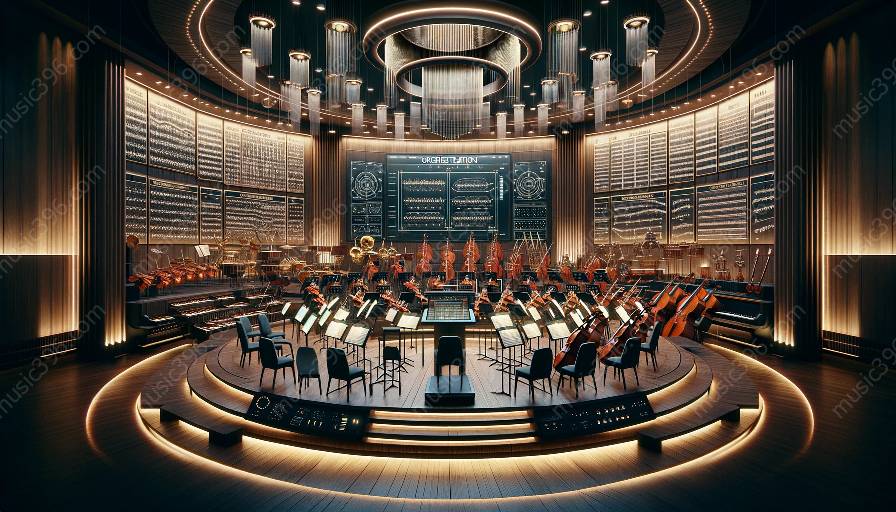Polyrhythms are intricate rhythmic patterns that add depth and complexity to compositions, particularly in the context of advanced orchestration. In this comprehensive guide, we will delve into the theoretical aspects of polyrhythms, the various techniques used in advanced orchestration, and how composers leverage polyrhythms to create compelling musical experiences.
The Fundamentals of Polyrhythms
To comprehend polyrhythms in the realm of advanced orchestration, it is essential to grasp their fundamental definition and application. Polyrhythms, also known as cross-rhythms, involve the simultaneous use of two or more conflicting rhythmic patterns. These patterns are generally distinct in terms of time signature, beat division, and overall structure, yet they converge to create an intricate and harmonious rhythmic texture.
For instance, one common polyrhythmic pattern involves the juxtaposition of a 3/4 time signature against a 4/4 time signature, where the notes within each signature align differently, resulting in a compelling interplay of rhythms. Moreover, polyrhythms often showcase asymmetrical groupings of beats, allowing for the generation of complex rhythmic tension within a composition.
Advanced Orchestration Techniques
The incorporation of polyrhythms in advanced orchestration demands a nuanced understanding of orchestral instrumentation, arrangement, and overall sonic dynamics. This section will explore various advanced orchestration techniques that are intricately linked with the effective utilization of polyrhythms.
Instrumentation and Layering
In advanced orchestration, the careful selection and placement of instruments play a pivotal role in rendering polyrhythms with clarity and impact. Composers often contemplate the tonal characteristics and technical capabilities of each instrument within the orchestra to create compelling polyrhythmic textures. Furthermore, layering different rhythmic patterns across various instrumental sections can enhance the overall depth and complexity of the composition.
Contrapuntal Writing
Contrapuntal writing, a hallmark of advanced orchestration, involves the intricate interweaving of multiple melodic and rhythmic lines. When integrated with polyrhythms, contrapuntal techniques yield intricate and interlocking rhythmic structures, enriching the sonic tapestry of the piece. The juxtaposition of polyrhythms within contrapuntal passages can instigate a profound sense of musical tension and release.
Orchestral Texture and Dynamics
Considering the vast sonic palette of a symphonic orchestra, composers can exploit the diverse tonal colors and dynamic ranges to accentuate polyrhythmic passages. Through strategic manipulation of instrumental dynamics, from delicate pianissimo passages to majestic fortissimo climaxes, composers can imbue polyrhythms with heightened emotional impact and dramatic flair.
Applying Polyrythms in Composition
Understanding the intricate interplay of polyrhythms within the advanced orchestration framework, composers strategically employ these rhythmic devices to elevate the expressive and structural facets of their compositions.
Compositional Structure and Development
Polyrhythmic motifs can serve as foundational elements for the overall structural development of a composition. By integrating polyrhythmic themes at key junctures, such as the exposition, development, and recapitulation in a symphonic work, composers can forge cohesive and compelling narrative arcs. Additionally, the adept use of polyrhythms enables seamless transitions between contrasting thematic materials, fostering a cohesive and engaging musical trajectory.
Harmonic and Textural Complexity
Through the strategic employment of polyrhythms, composers can infuse their compositions with a heightened sense of harmonic and textural complexity. By juxtaposing contrasting rhythmic layers, composers can engender rich harmonic interactions and multi-dimensional sonic textures, elevating the overall depth and allure of the musical work.
Conclusion
In conclusion, polyrhythms represent a captivating facet of musical composition, particularly when integrated within the domain of advanced orchestration. The interplay of conflicting rhythmic patterns, coupled with the nuanced orchestration techniques, grants composers a vast canvas for creativity and expressive storytelling. By harnessing the intricacies of polyrhythms, composers can invigorate their works with unparalleled depth, complexity, and emotional resonance, enriching the musical landscape with captivating sonic experiences.

















































